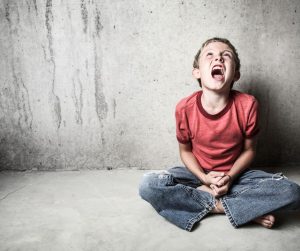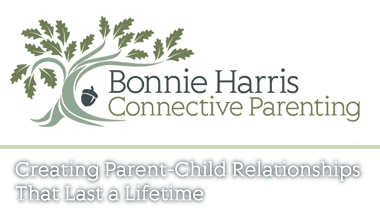 Heightened aggression in children, characterized by intense anger outbursts, defiance, and physical attacks, impacts children’s social interactions, academic progress, and emotional growth. Crucially addressed in early childhood, this issue, if unchecked, can result in lifelong anti-social or mental health issues.
Heightened aggression in children, characterized by intense anger outbursts, defiance, and physical attacks, impacts children’s social interactions, academic progress, and emotional growth. Crucially addressed in early childhood, this issue, if unchecked, can result in lifelong anti-social or mental health issues.
Understanding the triggers and implementing effective strategies for such aggression is vital, requiring the collaboration of parents, teachers, and mental health professionals. This blog explores these triggers and offers strategies for mitigating such behaviors, thus improving children’s quality of life and contributing to healthier communities.
Unpacking the Triggers of Aggression
Unraveling the triggers of aggression in children is a complex task that requires a nuanced understanding of individual behaviors and broader environmental factors. By unpacking these triggers, we can move beyond simplistic views of aggression as purely “bad behavior” and start to understand the underlying causes, paving the way for more effective and compassionate interventions.
Biological Factors
- Hormonal Influence: Hormones play a vital role in the regulation of behavior. Disruptions in the normal balance of hormones, particularly testosterone and cortisol, may lead to heightened aggression. Elevated testosterone levels have been associated with aggressive behavior, while cortisol, the stress hormone, when chronically high or low, can also affect aggression.
- Genetic Predispositions: Children who have parents with a history of aggressive or violent behavior may be more prone to aggression. A research article in 2015 by American Journal of Medical Genetics investigated the origins of aggressive behavior in children as young as two years old. Their findings indicate that genetic factors account for more than half of the variability in outward behavior problems.
Environmental Factors
- Family Dynamics and Parental Behavior: Various family-related factors are linked with aggressive behaviors in children. These include parental attitudes condoning violence, moral disengagement by parents, inadequate family communication, lack of emotional support, low acceptance levels by parents towards their children, and high levels of coercion or imposition such as strict rules, and punishments.

- Peer Influence and Bullying: Peers play a direct role in aggressive behaviors, with findings indicating that bullying and similar aggressive acts are often carried out collectively by multiple adolescents. The studies also reveal that friends often identify and target the same victims, underscoring the influence of peer dynamics on aggression.
- Media Influence: Media is a powerful influence on children’s behaviors. Children exposed to extensive violent content on television during their elementary school years have been found to exhibit increased levels of aggressive behavior as teenagers.
Psychological Factors
- Frustration and Inability to Express Emotions: Aggressive behaviors such as biting, kicking, pulling, shoving, hitting, and throwing objects are quite common in toddlers. This aggression typically arises from feelings of frustration due to a lack of control over their environment, or from their inability to articulate their wants or feelings effectively using words.

- Parental Reactions on Children’s Emotional Regulation: Parental reactions play a crucial role in shaping a child’s emotional regulation. According to research by Eisenberg and team, parents’ responses, particularly to negative emotions, can heighten a child’s emotional arousal if handled punitively. Such reactions may result in children avoiding the expression of negative emotions, such as anger and sadness, rather than learning to understand and appropriately express them.
Strategies to Address Heightened Aggression
Developing strategies to address heightened aggression in children is as critical as understanding its triggers. The goal is not to suppress feelings of anger or frustration, but rather to teach children healthier, more constructive ways to express these emotions.
Building Emotional Intelligence
-
- Teaching Emotional Identification and Verbalization: Encourage your children to identify and articulate their feelings, but it’s essential to choose the right time for such discussions. Avoid having these conversations when they’re already upset. Instead, seize opportunities during calm moments to discuss emotions and strategies to handle them.
- Practicing Active Listening and Validation: Adults should actively listen to children’s feelings and validate them. This validation helps children feel understood and safe expressing their emotions. It can be as simple as saying, “It’s really hard when a toy you love breaks.”
- Role-modeling Calm and Patient Responses to Stressors: Adults can help children learn how to manage stress by demonstrating calm and patient responses in stressful situations. By modeling such behavior, adults can show children that there are constructive ways to cope with stress and frustration.
Structuring Environment and Routines
- Creating a Consistent, Secure Environment: A stable environment provides children with a sense of safety and predictability, which is crucial for their overall well-being and development. This stability extends beyond physical safety to include emotional security as well. Implementing consistent rules and standards helps children know what to expect, which can greatly reduce uncertainty and anxiety. This often requires professional help for the parents.
-
- Using Visual Schedules and Timers to Reduce Uncertainty: Visual schedules serve as practical tools to guide your child through their daily activities and routines. They provide a clear and tangible roadmap of what’s coming next, which can be particularly useful for children who thrive on routine or struggle with transitions.
- Encouraging Participation in Creating Family Rules: One effective strategy to foster a sense of responsibility and respect in children is to involve them in the process of creating family rules. This collaborative process provides them with an opportunity to express their views and understand the reasons behind the guidelines being set.
Professional Help
- Identifying When Professional Help is Needed: Warning signs that professional intervention might be necessary include persistent and escalating aggressive behaviors that interfere with daily life or cause significant distress to the child or others. Additionally, if the child’s aggression leads to self-harm, harm to others, or damage to property, it’s crucial to seek professional help.
- Different Types of Therapies: Cognitive Behavioral Therapy (CBT) and Play Therapy are effective treatments for aggression in children. CBT helps children learn to control their frustration, improve problem-solving skills, and practice assertive behavior. This equips them with strategies to navigate conflicts constructively. Play Therapy, on the other hand, provides a safe environment for children to express their aggression and anger through play, under a therapist’s supervision.
 The Takeaway
The Takeaway
Addressing heightened aggression in children is a critical aspect of their overall development and well-being. While dealing with aggression in children can be challenging, with perseverance and the right approaches, children can learn to express their feelings more constructively. Remember, progress may be gradual, and every child is unique. What works for one might not work for another.
By maintaining an open mind, a supportive approach, and a willingness to seek professional help when necessary, we can create an environment where every child has the opportunity to thrive. The key lies in understanding, guiding, and nurturing children to foster healthier emotional states that trigger behaviors, instead of focusing on the behavior only.
Written by Shauna Larson, contracted writer for TherapyDen and passionate mental wellness advocate.
Related Articles:







